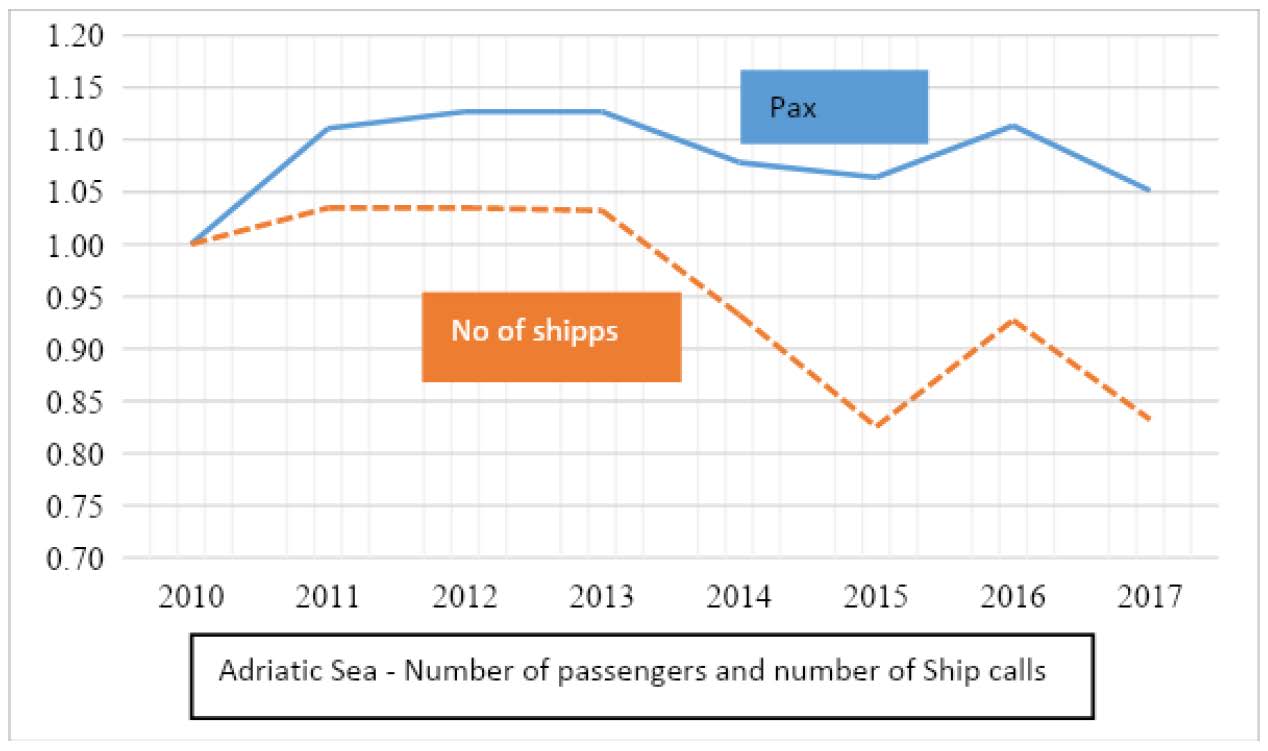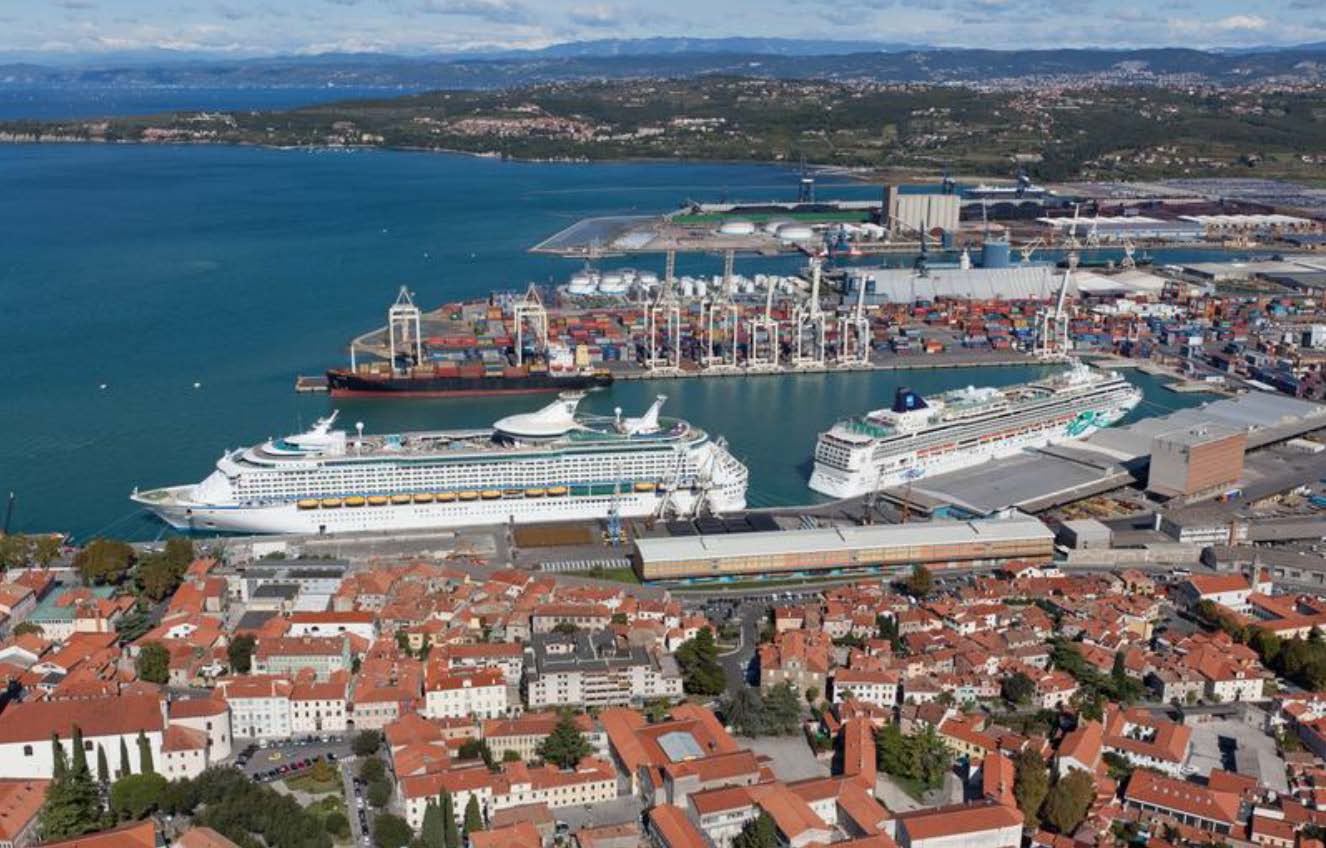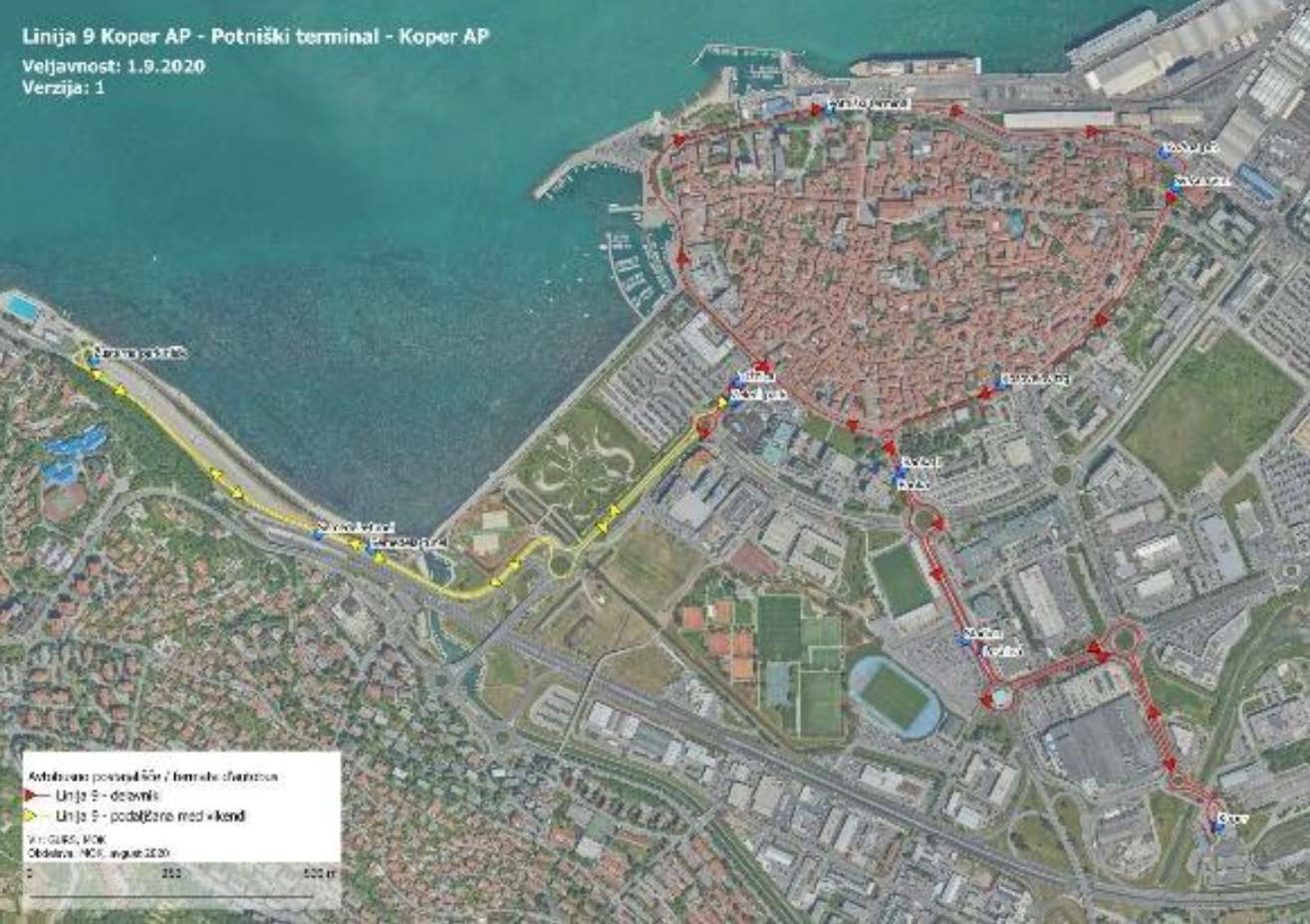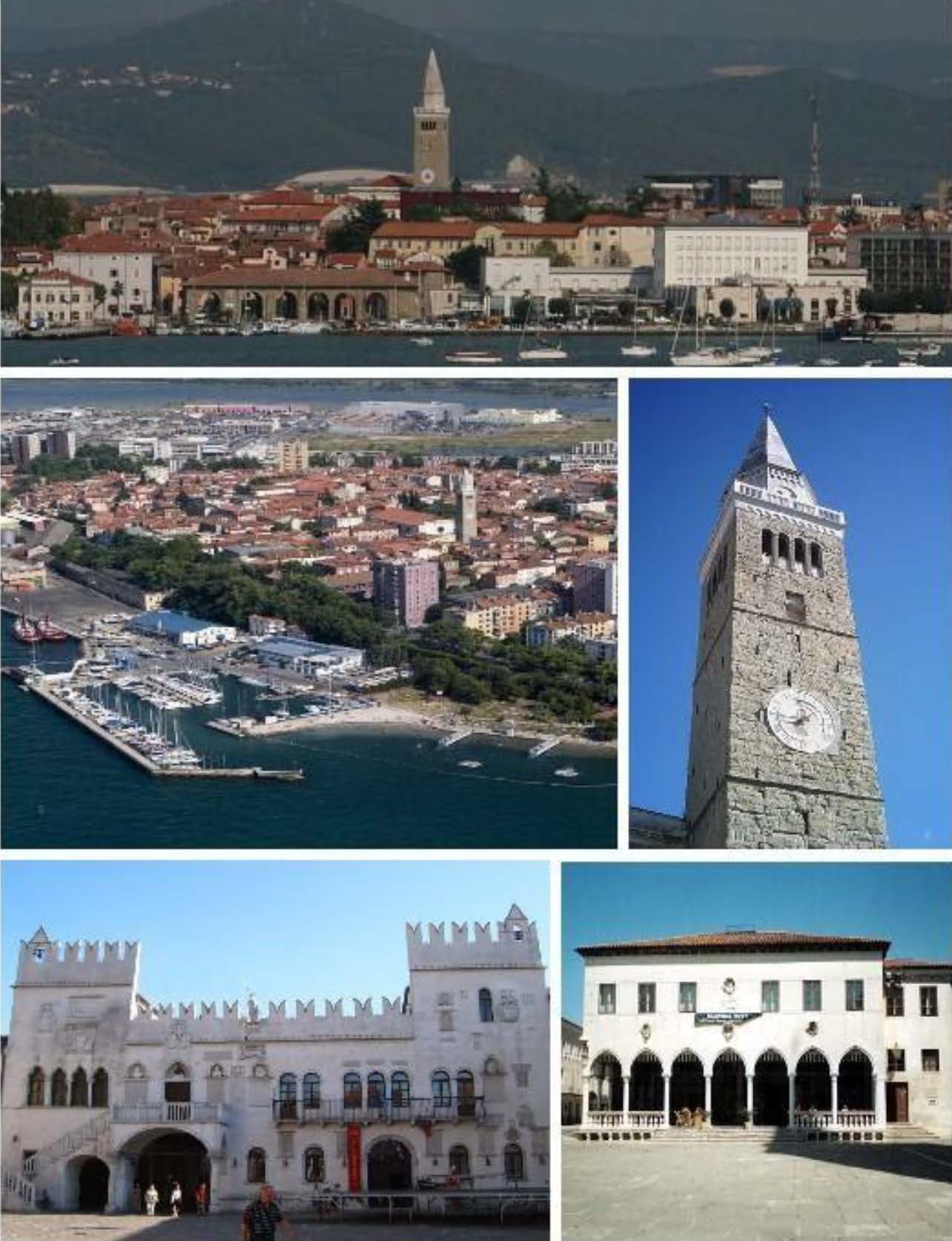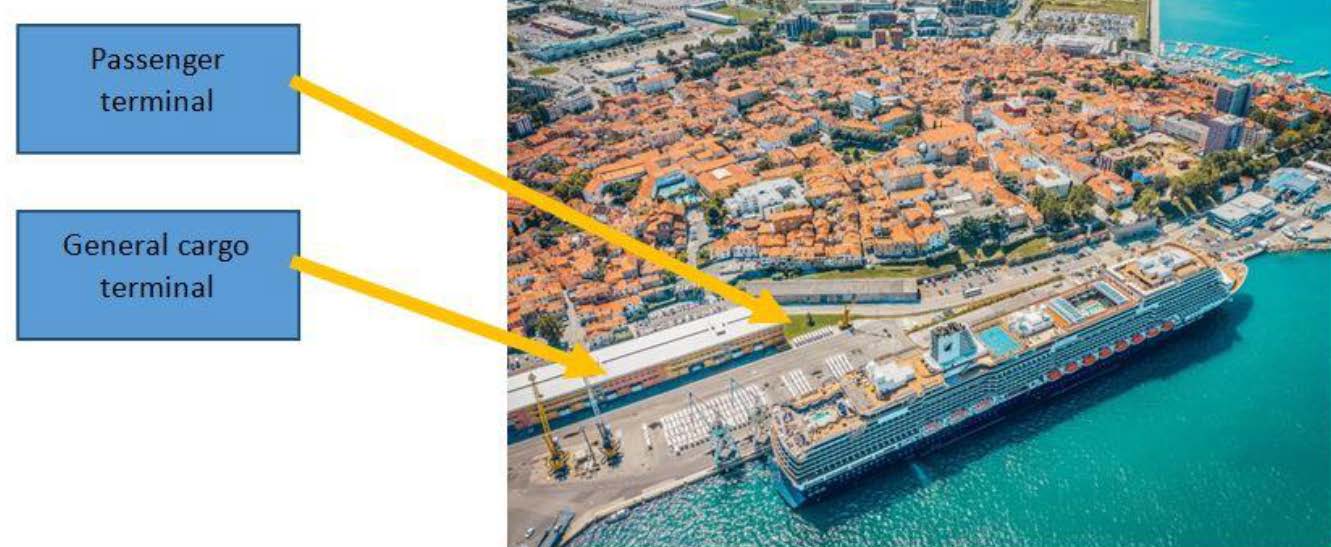Global maritime transport and the world economy are currently facing critical challenges. The pandemic COVID -19 changed the world as we know it today, which is reflected in social life, business and transport. As a major sector in global trade, maritime transport was the first to feel the impact of the pandemic – particularly the cruise sector. The pandemic stopped the cruise sector in 2020 and so far, nothing has changed. This poses a major problem for shipowners, ports and travel agents. Before 2020, there was a growing demand in the cruise business. Ports competed with each other to attract more passengers.
In terms of cruise destinations, ports have attracted a lot of interest over time. The condition of port infrastructure is one of the selection criteria in the cruise business. Ports need to function well and be competitive to benefit the cities where the port is located.
In order for the port to become a chosen destination for cruise ships, it is important that the necessary infrastructure is in place to provide efficient and effective port services. The condition of ports and their infrastructure affects the growth of cruising in a particular port. It is also important to ensure safe (dis)embarkation and quick transfer to onward journeys or day trips. According to Pallis (2016), the success of the port in becoming a chosen destination depends on five different factors. The first is the location and attractiveness of the port, then the tourist appeal of the destination, the accessibility of the destination, the port facilities and services offered and the port terminal charges.
The role and function of a port’s status in a cruise itinerary (i.e., as a home port, technical stop, or port of call) have a major impact on the cruise’s impact on the destination port. This can be observed in the form of income generation in local businesses, port revenues, job creation in the port and city, but also in the form of negative environmental impacts. For this reason, destination management organizations try to invest in port infrastructure, amenities and attractions to increase the importance and services offered by their port. In this way, they seek to encourage cruise operators to use ports as homeports or hubs, thereby multiplying the economic benefits of cruising in and around the port area. Good port infrastructure also has a major impact on the efficiency of cruise lines’ operations and the quality/attractiveness of services to their customers. The infrastructural elements that influence a shipowner’s decision to choose a port mainly relate to berths, piers and anchorages. One of the critical factors is the length and depth of the port’s berths. The length factor is critical for cruise ships. The reason is economies of scale. If we compare the number of pax to the number of ship arrivals (Fig. 1), we find a trend of large cruise ships arriving at Adriatic Sea that can accommodate a large number of passengers. The figure shows 2010 as the base year, so it has a value of 1. We normalized every other year to the base year to get the pax trend and the number of ship arrivals.
Fig. 1_Relationships between the number of ship calls and passengers.
We can say that the Adriatic cruise ports have experienced a rapid development in recent years, due to the general increase of the cruise sector in the Mediterranean and the regional Adriatic area. New tourist attractions with natural and historical diversity, good connectivity and accessibility of ports, as well as the geopolitical and economic location of the Adriatic are probably the most important factors attracting a shipping company. The most important port in the Adriatic is Venice, followed by Corfu, Dubrovnik, Kotor, Bari, Brindisi… Koper is one of the smaller ports in this region.
Case study of the Koper passenger terminal
One of the ports on the Adriatic coast is the port of Koper. It is a relatively new port in the cruise industry. The first cruise ship arrived in Koper in 2005. From 18 cruise ships with 1,100 passengers, traffic increased to 72 cruise ships with 115,851 passengers in 2019 (www.luka-kp.si).
City of Koper
Koper cruise terminal is located in the port of Koper near the old town of Koper. We can see the cruise ships in the port, very close to the old town in picture Fig. 2.
Fig. 2_Port of Koper. (Source: www.luka-kp.si).
Koper is in Slovenia, near the Italian border, and is the fifth largest city in Slovenia, with a population of 53,000. Koper is an old town; it has existed since the Roman Republic time and has many monuments. The most beautiful ones are Praetorian Palace from the 15th century and Loggia, a Venetian Gothic palace, which are located in the main square of the city (Fig. 4). In Figure 3, we can see that the distance from the cruise terminal to the main square is only a 5-minute walk.
There are also other exciting areas in the city, and there are many beautiful villages and places in the surrounding area that are worth visiting.
Fig.3_City of Koper, with a bus connection to the passenger terminal. (Source: www.koper.si).
Fig.4_Tourist attraction in Koper. (Source: https://sl.wikipedia.org/wiki/Koper).
Passenger terminal at Port of Koper
Port of Koper is the only Slovenian port. It is a public limited company providing port and logistics services in 12 specialized terminals. One of the terminals is Passenger Terminal, which is the youngest terminal in the port. In 2020, the port handled more than 19.5 million tons of cargo. The most important goods for them are containers and cars. There were 945,051 TEUs and 617,157 cars handled. This is less than year before. The Port of Koper makes an important contribution to the city’s economy.
The Port of Koper has a special location; residential areas surround it on two sides and a nature reserve on the third. Normally, the port authorities (usually a public corporation under a municipal, regional or state authority) determine the port’s development strategy and regulate the relationship between the port and the city. In the case of Slovenia, there is no port authority. The Port of Koper has a specific management structure and is managed and operated by the company Luka Koper, which combines private and public capital. The governance model influences the autonomy of the port authorities in decision-making and their financing options. This is also evident in the construction of the passenger terminal in Koper. As the planned location is part of the port area where general cargo and fruits are handled, the port is in no hurry to build a passenger terminal (Fig. 5). There is a need to develop their seaside with berths for cruise ships, the yard side with a terminal building, and the land side with gates and parking for buses. If they only develop one part, it can lead to an irrational use of resources that has no benefit to the overall throughput capacity of the port. But the space problem for storing different types of cargo is large, and they are making the calculation about the rationality of leaving a portion of the berth for cruises, which is very sezonal.
Fig.5_Location of Passenger terminal and General Cargo terminal. (Source: www.luka-kp.si).
Relation between passenger terminal and city
When a port decides to have a passenger terminal, it always does so in consultation with the city. The city or the residents of the city see it as a way to promote the destination, to make money by catering, selling products and other services. As long as there are more advantages than disadvantages, there are no major problems. These occur when there are major problems due to overcrowding of the city and its surroundings with tourists who still do not spend as much there as originally expected. Overcrowding problems spoil the mood of the residents. Examples of such cities are mainly smaller old cities that are limited due to their specific construction. These are Venice, Dubrovnik and in recent years Kotor. Larger cities such as Barcelona can accommodate more passengers from passenger ships as they are easier to relocate due to the size of the city.
An interesting example in the literature (Perez) is the old town of Kotor in Montenegro. Years ago, in 2003, when the first cruise ships arrived, everyone was excited. After only a few years, the enthusiasm of the inhabitants has greatly diminished, as large groups of tourists prevent them from living a normal life.
It is important, then, to find out where the dividing line is between these two poles. It is difficult to determine this by the number of passengers per km2 or similar numerical indicators, because the situation is different in different cities. Therefore, each city tries to determine where this boundary lies through its analyses. The problem of eco-sustainability is becoming more and more important and therefore ports and cities have to decide together what their development strategy should be.
If the Port of Koper wants to establish more operations, it would have to expand the berth for ships and deepen the seabed (basin) for berthing in the port. It should also provide the services and operations of a domestic port, i.e. water, fuel, goods, waste collection, the presence of a passenger building, etc. In the current situation, the provision of all these services would require the spatial expansion of the passenger terminal, the construction of the necessary infrastructure and the provision of transport links to the port.
As one of the ports on the northern Adriatic, the port of Koper has the potential to be included in the itineraries connecting Italian and Croatian ports. The advantage of the Port of Koper may be primarily that it can offer cruise ships affordable port services and fees; and for travellers, the unique sights associated with the port’s hinterland. The city supports the port with a wide range of tourist services, the organization of visits to museums and fairs in the area, free bus transport around the city and the friendliness of the locals.
References
Esteve-Perez, J., Garcia-Sanchez, A., Muñoz-Paupie, A.: Cruise Traffic Seasonality Patterns in the Western Mediterranean and the Adriatic Sea: A Challenge to Port Operators. null. 47, 4, 362–386 (2019). https://doi.org/10.1080/08920753.2019.1612701.
Lorenčič, V., Twrdy, E., Batista, M. Development of competitive-cooperative relationships among Mediterranean cruise ports since 2000. Journal of marine science and engineering, ISSN 2077-1312, 2020, vol. 8, iss. 5, str. 1-22, doi: 10.3390/jmse8050374.
Lorenčič, V., Twrdy, E., Giuffrida, N., Ignaccolo, M., Inturri, G. Measuring and evaluating the performance of cruise ports with a multicriteria approach. 2020, str. 185-192, ilustr.
https://icts.sdzp.org/wp/wp-content/uploads/2020/09/Proceedings-ICTS-2020.pdf.
Pallis, A.; Arapi, K.P. A multi-port cruise region: Dynamics and hierarchies in the Med. Tourismos 2016, 11, 168–201.
Zanne, M., Twrdy, E. Sustainability of small ports : the case of Adriatic Port of Koper, The Baltic Seas International Maritime Conference – European Maritime Research from Adriatic to Baltic: Turku, Finland, 24-25 September 2019, ISSN 2342-1401), https://www.utu.fi/sites/default/files/media/MKK/Julkaisut/A76_Baltic_Seas.pdf.
Head Image: Cruise ship in Koper. (Source; https://visitkoper.si).
